Last updated 02-20-2020
By:
Jessica Wise
My sister and I make recommendations to each other all the time.
“Terakawa has incredible ramen. You have to go!”
“The Demi Lovato documentary gave me goosebumps. You need to watch it.”
“Did you listen to the latest episode of True Crime Garage? They did a great job with the JonBenét Ramsey case.”
About two years ago, my sister called me and asked if I had Spotify.
“No,” I replied. “I have Pandora, and I use that.”
“You have to try it. You’re going to love it! It’s so much better than Pandora. We have a family plan. We’ll send you an invite. Try it, and let me know what you think.”
Truthfully, I don’t like anyone messing with my music situation, and I’m usually not too keen on making changes. (The switch from CDs to digital music was a traumatizing time in my life.) But, I reluctantly agreed.
During account setup, I was asked to provide my birthdate, gender, and a shortlist of artists I enjoy.
Based off of the small bit of data I provided, I was welcomed to Spotify with a personalized playlist. I was hooked after 5 minutes.
The user experience only got better from there.
Two Strategy Components Join Forces to Create a Data Mining Powerhouse
Thanks to Spotify, I discovered new artists to fall in love with, found other users to follow that have mutual musical tastes, received customized auto-generated playlists, created a personalized radio station, and easily built a shared playlist with my family.
The more I used Spotify the more it seemed to “know me.” The more my sister used it, the more it seemed to know her. The more everyone used Spotify, the more it seemed to know…well, everyone.
Better yet, the brand used its acquired knowledge to continually improve for its users.
This is why, since its inception, Spotify has become nothing short of a phenomenon.
And, by a phenomenon, I mean a network effect-powered phenomenon whereby increased numbers of people or participants improve the value of a good or service (Investopedia).
The network effect is a phenomenon whereby increased numbers of people or participants improve the value of a good or service.
– Investopedia
The very foundation and success of Spotify has been built upon this concept.
A Harvard Business School student said it best in 2015. Spotify is “An Ecosystem Powered by Network Effects.”
100% true. But, its success has been powered by not one but two business strategy component heroes.
Let us not forget Spotify’s equally powerful protagonist, data-enabled learning.
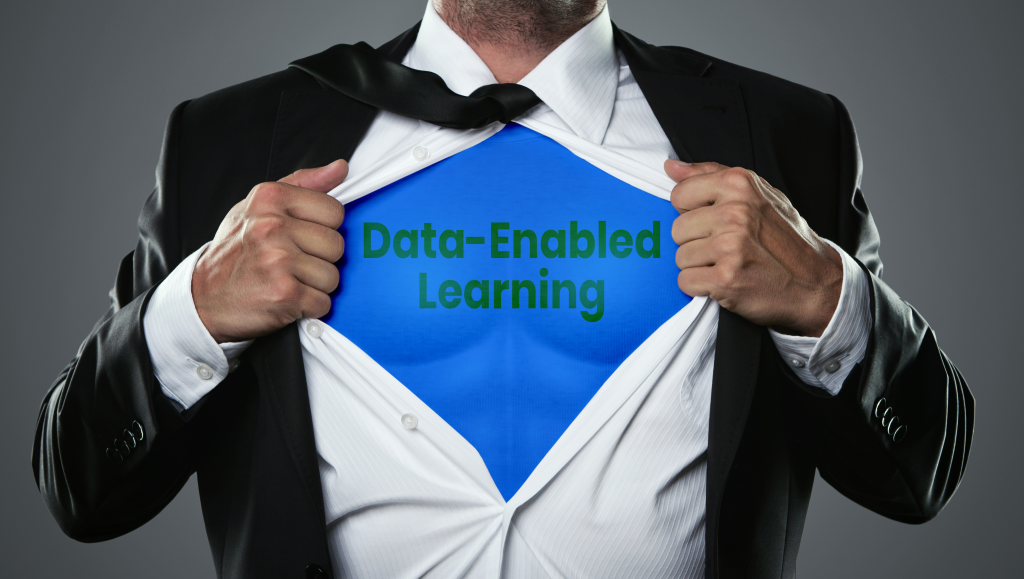
Valuable Data Collection + AI + Network Effects = Market Dominance
With the emergence of internet connected devices and cloud technologies, brands like Spotify can now collect and process customer information via artificial intelligence (i.e. data-enabled learning).
Valuable data collection qualifies as the gathering of any customer information that a brand can utilize to improve a product or service or make a product or service more valuable to the end user.
Moreover, the more data a company collects, the more accurate the findings are and the more personalized the product or service becomes for its customers. Hence, the heavy impact of data collection when coupled with network effects.
When network effects and AI-enabled data learning collide, market dominance is close at hand.
Disclaimer: Data-Enabled Learning Isn’t the Solution for Everyone
Unfortunately, not every brand’s product or service is structured to benefit from large scale, advanced data collection.
So, before you start installing customer feedback survey kiosks, tracking user behaviors, launching questionnaire email campaigns, or taking online opinion polls, ask yourself the following questions.
- How much of a competitive advantage could collecting data actually give to your brand?
- Will investing in AI-enabled data collection be a viable investment long term?
The answer to both of these questions is…it depends.
Here are the principles that any company’s data collection strategy has to be measured against in order to determine if data collection will garner unprecedented success.
1. Consider The Value (If Any) That Customer Data Will Add To Your Product or Service
First, you have to determine if customer data will increase the value of your offering.
For example, many automakers stand to benefit immensely from data collection.
Why? Because the performance accuracy of their products is directly proportional to the safety and security of drivers and passengers.
Case and point: Volvo collects customer data from their connected vehicles to predict when parts will fail. It also monitors vehicle performance in hazardous road conditions to maintain its strict safety standards.
Conversely, there are some industries that would see little to no benefit if they were to invest in customer data collection.
Since we’re on the topic of passenger vehicles, parking meters come to mind as one such product.
Regardless of how much information a parking meter company collects, the parking space’s size, location, time constraints, cost to park and payment method will remain unchanged.
At this time, no amount of customer data could bring significant improvements in parking meters. So, investing in a large scale initiative would be futile.
2. Will You Reach a Point Where Data Collection Will No Longer Lead to Valuable, Actionable Improvements?
It’s important to ask yourself if you will reach a point when the data you’ve collected will no longer help you make valuable improvements to your product or service.
Hypothetically, let’s say a pharmaceutical company is collecting patient data on a new diabetes medication that its team developed.
Currently, the medication has been effective at maintaining normal sugar levels and eliminating other disease associated symptoms and complications in 80% of patients.
Essentially, 80% of participants can live as though they have been cured.
Scientifically, an 80% success rate is a wonderful achievement.
However, it would be in the pharmaceutical company’s best interest to continue conducting studies and gathering patient data.
In this scenario, 20% of diabetic patients are still living with the effects of the disease despite receiving treatment. And, of course, patients would be much more inclined to pay for a cure than a chance at a cure.

Thus, the value of collecting patient data will never go down until the medication achieves a 100% success rate.
As a contrasting example, a product such as Yeelight Smart LED Bulb would not benefit from continuous data collection.
Yeelight Bulbs allow homeowners to configure their lighting settings and create a custom lighting schedule via a smartphone application.
It takes mere hours for the Yeelight application to collect all of the customer data it needs in order to provide a personalized lighting experience.
However, once a user’s preferences are collected and logged, further data collection has no benefits because it will not help to improve the product any further.
3. Will the Data You’ve Collected Hold Its Value or Lose Its Value Quickly
Google has been collecting search-engine data from internet users for decades. The information it has collected is a prime example of data that has never lost its relevance.
The same search behaviors Google recorded in 2000 are still relevant today (as historically identified patterns are partially responsible for optimizing current search results).
Google explains it best:
“Google ranking systems are designed to do just that: sort through hundreds of billions of webpages in our Search index to find the most relevant, useful results in a fraction of a second, and present them in a way that helps you find what you’re looking for. These ranking systems are made up of not one, but a whole series of algorithms. To give you the most useful information, Search algorithms look at many factors, including the words of your query, relevance and usability of pages, expertise of sources, and your location and settings (Google Search).”
In short, the user data Google collects holds its value and will continue to do so in the foreseeable future.
On the contrary, standalone GPS units by brands like Garmin and TomTom may become obsolete because the data their devices collect expires quickly.
For example, users can download new maps and updates to ensure accurate routing. However, travel conditions can change in just minutes and the stored information quickly loses its value for traveling drivers.
Unlike connected smartphone map applications, standalone units have a limited ability to collect real-time data on traffic patterns, road conditions, detours/road closures and accidents.
4. Can the Data You’re Gathering Be Replicated or Easily Produced
Is your company harvesting data in order to offer your customers something that no one else can?
DNA companies like 23andMe are doing just that.
23andMe collects genetic information with its DNA kits and, in turn, provides participants with insight into their ancestry, physical traits and health.
In addition, it’s also worth mentioning that the more individuals that enter into the genetic testing database, the more useful the product becomes for finding relatives, revealing ancestry, and medical research (a prime example of network effects in action!!).
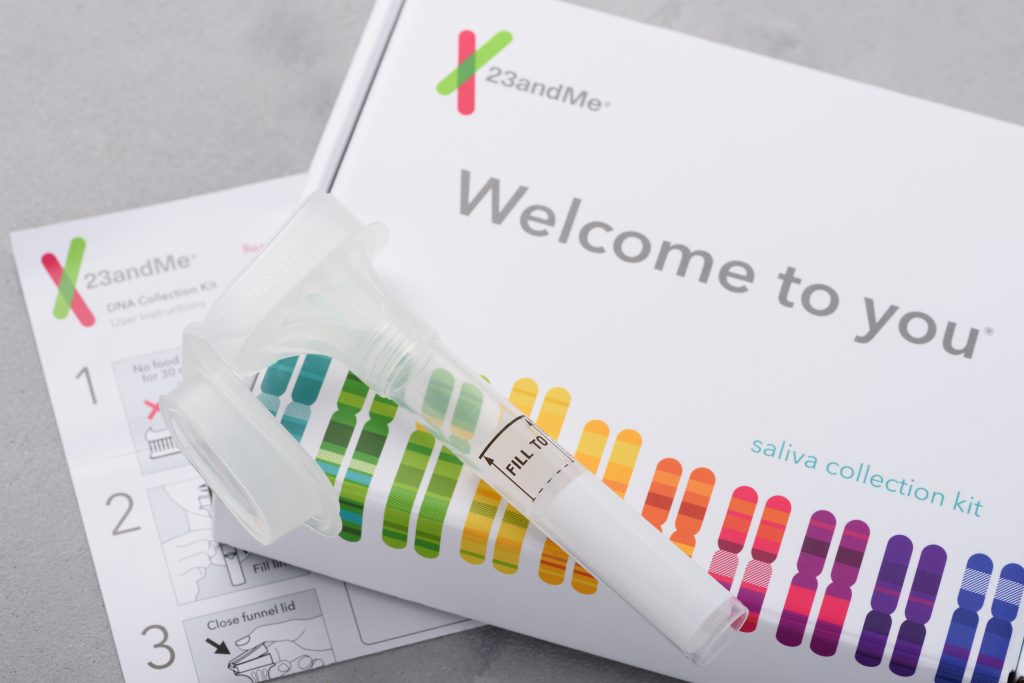
The individualized reports 23andme provides can never be replicated (without willing participation) and yield information that customers would not have easy access to otherwise.
This is also the reason genetics companies have experienced wild success in recent years.
By the start of 2019, more than 26 million consumers had given their DNA to commercial ancestry and health databases.
If the trend continues, the gene troves could hold data on the genetic makeup of more than 100 million people within the next two years (MIT).
This has resulted in a sizeable revenue stream for DNA companies, and not just from the sale of the DNA kits.
Medical and pharmaceutical companies have a strong interest in the data. And, they are unable to gain access to the information unless they come directly to the source.
The result is data being exchanged for dollars…big dollars.
For instance, in 2018, GlaxoSmithKline entered a $300 million deal with 23andMe just to gain access to their stored customer data (Forbes).
Dissimilarly, grocery store loyalty cards collect data that can be easily reproduced.
Let me explain…

Suppose that a shopper frequents two different grocery store chains (one chain is close to work, one chain is close to home).
The customer has a loyalty card for both grocery stores, but each brand is able to obtain the same user information (i.e. name, phone number, address, frequently purchased items).
However, neither loyalty card is using the shopper’s data to offer something unique. Both offer standard rewards that include coupons and special member pricing.
Thus, loyalty cards truly have little to no bearing on whether or not a customer chooses to shop with them. They are simply an added perk.
5. Without Access to Your Data, Can the Improvements You Make to Your Product or Service be Easily Replicated By Competitors
There’s a reason why Amazon is one of the world’s most valuable companies.
The data it continually collects and the improvements it continually makes to its service cannot be easily replicated by its competitors.
For starters, Amazon offers hyper-personalized recommendations to its customers.
“It has track of almost everything- starting from your needs, what you have searched, what you will need in future, your personal details (like contact number and address) and through the address it also tries to understand the income level of the user, so that it can understand what products to offer and what not. It also keeps a check on the feedback habits and studies that as well,” writes Palak Jain, Data Expert for DataFlair.
Amazon’s intricate understanding of each user makes the online shopping experience fast, easy, personalized, and hassle-free.
Amazon not only knows what its customers need, but it also places what the shopper needs front and center.
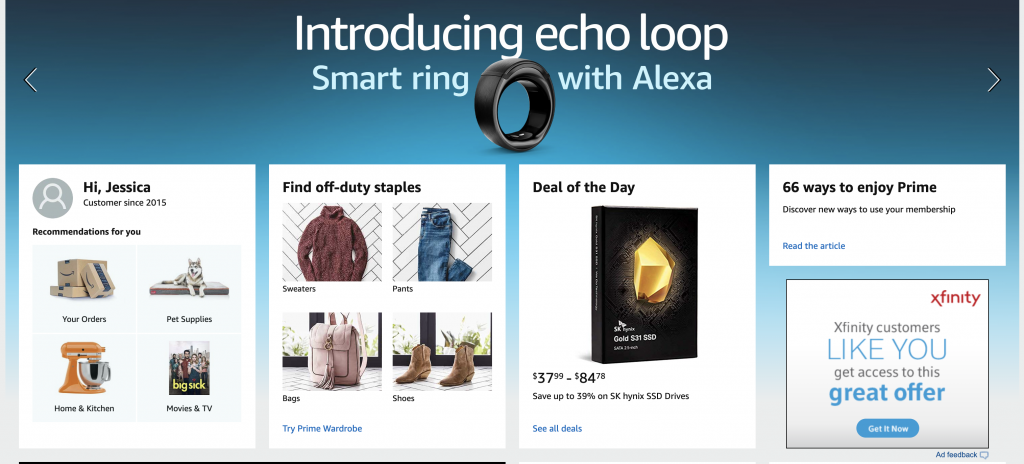
The brand even takes the experience one step further with its patented “anticipatory shipping” data tracking. This initiative speeds up the delivery process by predicting when a customer will place their next order.
Conversely, help desk software companies like LiveHelpNow scale and update their products based on the needs of a business as opposed to the needs of a business’s customers.
Once a new software feature is released, it can easily be mimicked by other help desk companies.
This is why there are hundreds of companies that offer help desk software, and there is only one Amazon. It is obvious it is hard to compete with Amazon’s scale, but you can still make a dent. Hire a BPO company to help you sift through your data quickly and on a budget.
6. Will the Data You Collect from Some Improve the Product for Others
For this example we turn back to our article opener, Spotify.
Without a doubt, the data Spotify collects from me improves my experience with the application.
It allows Spotify to provide me with tailored suggestions, personalized playlists, and even alerts me when an artist I like releases new music (all thanks to data-enabled learning).
However, the real win for Spotify is that it utilizes the data it collects to improve the application for every user, not just individual users.
The brand’s main draws are its sharing and discovery features.
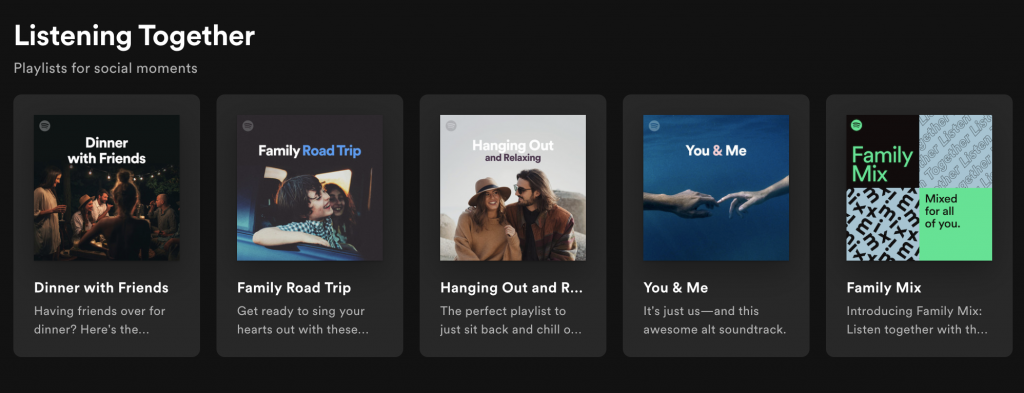
For example, Spotify continues to focus on social sharing, which not only benefits individual users, but also encourages new users to join and listen.
Users can explore their friends’ musical tastes and share their favorite artists and songs with others. Thus, the more people use Spotify, the more enhanced the experience is for everyone (network effects at their finest).
It’s this winning combination of network effects and data-enabled learning that has thrust Spotify into the global market and grown its membership to 271 million subscribers.
Conversely, a lack of network effects is the reason why streaming services like Pandora have failed to reach the same level of success.
Thumbs up and thumbs down votes accurately tailor a subscriber’s Pandora stations to their preferences, but fail to pull in other users for the purpose of social sharing and cross-user learning.
7. How Fast Can the Data You Collect be Used to Improve Your Product or Service
Once you’ve gathered data from your customers, the faster you can utilize it to make improvements the better.
There’s two reasons why.
- It will allow you to stay one step ahead of your competitors. By the time the competition has made an effort to mimic your offering, your next innovation will already be in queue.
- It will provide your customers with an optimal user experience that cannot be found anywhere else.
Ideally, data-catalyzed improvements will be made automatically, in real-time via artificial intelligence.
The crowd-sourced navigation app, Waze, is the perfect representation of a product that successfully uses data-enabled learning to make instant updates.
Waze analyzes the information it collects from its users to calculate average vehicle speed, improve map layouts and log road turn direction.
And, guess what? It’s made possible, in part, by network effects.
When a driver navigates using Waze, they are effortlessly sharing information (like traffic conditions and road structure) with the application. Waze then updates its maps in order to provide optimal routes for all drivers.
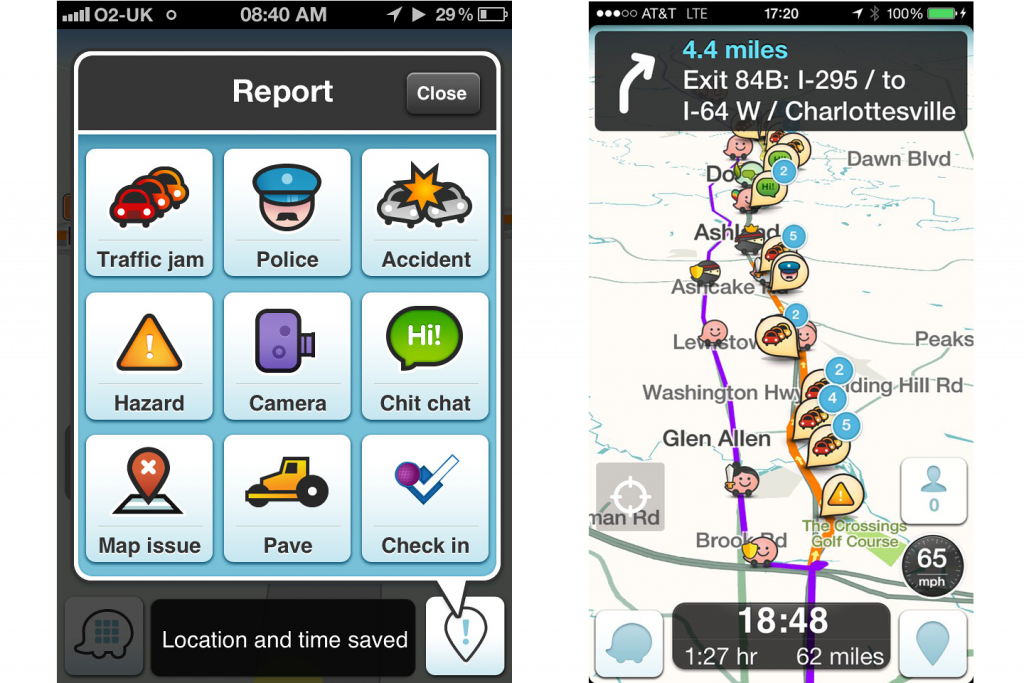
In addition, Waze actively reports to the rest of the “Wazer” community, alerting other drivers that are traveling the same roads to traffic jams, accidents, police traps, blocked roads, and weather conditions.
By utilizing data-enabled learning and network effects, Waze collects this information and immediately analyzes it in order to provide other Wazers with the most optimal route to their destination, 24 hours a day.
For a contrasting example, we look to receipt surveys.
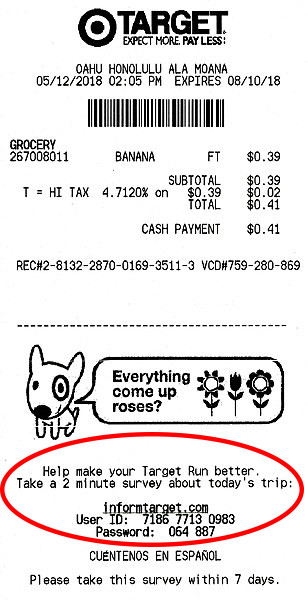
Let’s say a department store customer can’t find an appliance they’re looking for, but expected it to be in stock.
By the time the customer checks out, goes online, fills out the online survey, and submits his or her feedback, The department store has lost the opportunity of the sale.
Worse yet, by the time the shopper submits the feedback and the response reaches staff members who can implement changes, the shopper will have, more likely than not, already taken his or her money elsewhere.
The Million Dollar Question: Will Your Data Induce Network Effects?
The million dollar question is: Will your data create network effects?
Meeting all of the criteria above is important.
However, points #6 and #7 will truly determine if large-scale data collection will grant your business a competitive advantage.
The bottom line is that acquiring information from one customer should be done with the purpose of improving the product not only for that individual, but for every customer.
Additionally, when improvements can be made in a timely manner, customers will take notice, and recommend your offering to others.
As more and more of your customers realize your product or service’s value, network effects will be born.

